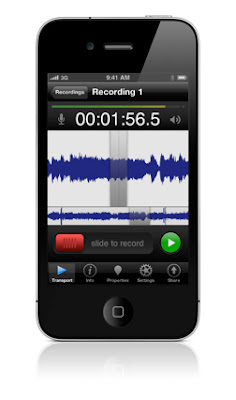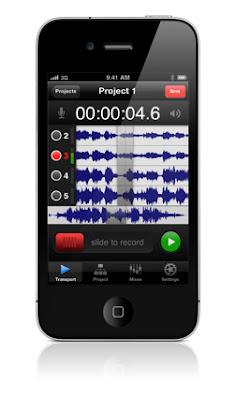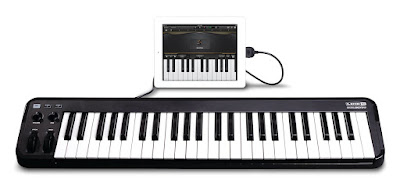I will keep you posted on this, and what I happen to come up with. What about you? Have any of you had to isolate a room with windows? If so, what did you do? Please, let me know, and I will pass that information on, right here on the blog!
Tuesday, April 24, 2012
Sound isolation as treatment
I will keep you posted on this, and what I happen to come up with. What about you? Have any of you had to isolate a room with windows? If so, what did you do? Please, let me know, and I will pass that information on, right here on the blog!
StrumSchool.com, a free web-based service that uses a curriculum of instructional videos, downloadable documents and a dash of personal attention to teach aspiring musicians how to play the guitar, has announced its beta launch.
StrumSchool's service is geared towards teaching beginners basic guitar fundamentals. The site uses an easy-to-follow curriculum of instructional videos, downloadable lesson plans and personal attention from professional teachers to help its students learn how to play any genre of music.
StrumSchool was designed to teach aspiring musicians how to play the guitar at their own pace and on their schedules. Irregardless of how much previous experience its users may or may not have, StrumSchool focuses on making the process of learning basic guitar fundamentals easy and free.
Sunday, April 22, 2012
Using Expanders in audio
I was talking with a very good friend of mine, recently, about posting topics for the Home Recording Weekly blog. I expressed that I have been tossing around the idea of writing a "series of posts" covering some of the basic tools of our trade. He liked the idea, and he agreed with the idea, and then added to it by saying "Content is king". Simply put, and yet right on the mark. Content is king indeed. Not only have I decided to write this series of posts, but I have decided to start with a tool known as the expander.
Expanders..... What are they, and how do we use them in our audio? These are some great questions, and I really hadn't used one before too long ago. Recently, I was using a different "audio tool" in place of an expander, and the results were less than stellar. Since then I have fallen in love with Expanders, and need to share what I have learned.
Let me detail what it is that expanders do, and then I will tell you what I was using in its' place.
Expanders are a tool that we can use in out tracks to help clean up audio. Expanders can be set, much like a compressor, to "work" or "turn on" once a threshold has been crossed. Compressors do not operate until a threshold has been crossed, and once they turn on they reduce the output or reduce the signals output. However, unlike a compressor, once the desired threshold is crossed in an expander, the expander then acts more like a switch. Once the threshold is crossed, the expander "opens" and allows audio to pass through untouched.
You might be thinking about noise gates right about now, and asking yourself why I didn't use a noise gate as a comparison in this post, you know, instead of a compressor. Expanders can be thought of as a noise gate, but they do operate differently than noise gates. There are some important features that expanders have that most noise gates do not have. For example, expanders will not only allow a threshold to be set, but you can adjust the range, attack, release, and most importantly, "the hold".
Most of the noise gates that I have used in the past, are either "on or off", or "allowing audio to pass or not allowing a signal to pass". There are no settings like "the hold" feature found on an expander.
So, what is "the hold" feature? The hold feature tells the expander how slowly, or how quickly, to toss the switch once the threshold is released, or shut off. This can act like a simple fade, so that the switching on and off does not stand out. The "hard" clicking on and off of audio can be noticed. That is the reason noise gates can often times be "heard" when used, and expanders can not be "heard" or audible. That is why I decided to use compressors as a reference, and not a noise gate.
Let me explain how I have been using an expander lately, and why a noise gate would not work in this particular case.
I have been mixing a rather popular, and new podcast. This has proven to be a blast, and I look forward to each new episode that I am handed. As usual, I had some interviews that needed to be mixed in with the podcast. The interviews are actual conversations via Skype, with each person using headsets, and recorded using Audacity. These interviews come to me on two mono tracks, with one speaker on each track. So, as one speaker stops talking, the other speaker starts talking. In between the talking there is a lot of noise, like interference and electronic jittering. I almost started to remove this noisy, dead space in between the speaking parts by simply deleting it, and then use fades to bring the speaking parts in and out. This would have taken a very long time, and been rather tedious. So, I decided to "drop" an expander on each of the two mono tracks, and see just how well I could do at removing this noise. You will need to watch the video to see how I set it up, but let me just say that it worked like a charm.
The important thing that I hope you retain, here, is that I saved myself a lot of time and frustration by using an expander. Since this mixing gig is a paying job, the less time I spend editing, the more money I make. Well, when figured out using the "paid by the hour" formula anyway. Truth be told, I make a set fee with each episode that I mix. So, in this case, time really is money. Plus, I avoided a major headache by not having to delete a ton of track, and then add fades all over the place. Yet another thing thing that I want you to remember here is that a noise gate (most likely) would not have worked as well, if at all, in this particular situation. Why not? Great question. Let me answer that one.
Without the "hold" feature found on expanders, the "switch" that allows audio to pass through would either be "on, or off". This hard switching on and off is not only audible to the listener, it can become very annoying! Most people would not want to listen to the interview, let alone the podcast, and that would be bad news for me! A noise gate has its' place in audio, and can be wonderful for a lot of things, but an expander is just way better for this particular application.
Once more, I wish to just say "Thank you for stopping by the Home Recording Weekly blog". You are the reason I blog, and You mean everything to me! Let me know about anything you might want to see here, and I will do my best to make it happen. Please just drop your email in the little box up at the top of this blog, and to the right, just so you can get Home Recording Weekly as email. This way you will never miss a post. You should find Home Recording Weekly on FaceBook, by following the link, and "Like" it. I like to know who my readers and followers, and a simple "Like" allows me to see you. I am also on Google+, and if you are too, follow the link and let me know you are out there. Thanks for all of your support, and until next post, "Have fun and be kind to one another!
Friday, April 6, 2012
Audiofile Engineering apps that I love, and use a lot!
 Audiofile Engineering has some very cool apps for iOS devices. I demo'd their "Quiztones" app on Home Recording Weekly some time ago, and that was cool all by itself. They are cool because they are very simple to use, elegantly laid out, and made for capturing sound! I highly recommend that you look into purchasing these two apps. Why? Here are the two main reasons I will give you to head over and get them. One; because I use them often and have fallen in love with the ease of use when capturing sounds. Two; the easy to use editing functions found within!
Audiofile Engineering has some very cool apps for iOS devices. I demo'd their "Quiztones" app on Home Recording Weekly some time ago, and that was cool all by itself. They are cool because they are very simple to use, elegantly laid out, and made for capturing sound! I highly recommend that you look into purchasing these two apps. Why? Here are the two main reasons I will give you to head over and get them. One; because I use them often and have fallen in love with the ease of use when capturing sounds. Two; the easy to use editing functions found within!

First of all, there is the FiRe 2 field recorder for recording sounds into your iOS device. It is a fast way to record sound, when you want to, and where ever you are. Not only will the FiRe 2 field recorder record sounds, but it allows for some editing too! Here is some information and specs, as taken from the Audiofile Engineering website.
"FiRe2 will again revolutionize what you expect from a portable recording application. FiRe was the first iPhone recorder to display an accurate audio waveform in real time, the first to support markers, Broadcast WAVE metadata, and the instant downloading of files in multiple file formats. FiRe was the first application on any platform to offer native SoundCloud integration. Now FiRe 2 incorporates into its original elegant design a stunning list of powerful
new features including":
- Advanced editing suite with SmartEdits, Bezier fades, change gain, normalize, looping playback, regions and more
- EQ and Dynamics effects by Audiofile Engineering
- iTunes File Sharing
- Enhanced input processing powered by iZotope™
- Record in background

FiRe Studio is built exclusively for iPhone and iPod touch and is brought to you by the minds at Audiofile Engineering. Combining powerful, elegant and uncluttered audio utilities with unparalleled technical support, Audiofile Engineering is one of the most innovative and experienced audio software developers for OS X and the iOS. "
- Editable Markers and Regions
- Detailed Mixer (rotate to landscape view in a mix)
- Click track
- Unlimited number of mixes
- Configurable track colors
- File export via iTunes File Sharing & FTP
- Dropbox integration
These are two great apps, and I love them both. But how do I use the FiRe2 and the FiRe Studio? Well, this is just an example, but true none the less. I sing my five month old son to sleep most nights. This is fun for me, but I had an idea. What if I could sing to him, with a backing, multiple track? So, I opened up FiRe Studio and laid down six tracks of the "sleepy time song". Now, oftentimes, I will pull out my IPhone, open
FiRe Studio, find the "Sleepy time song", and press play. I don't do this all the time, but it is something that makes my life a little more high tech-like! Thanks to Audiofile Engineering for making such cool apps for the recording nuts in us all!
Thursday, April 5, 2012
Figure by Propellerhead
 Let me tell you right now that Figure is not Reason or Record. So, what is Figure? The most fun you will have for a buck!
Let me tell you right now that Figure is not Reason or Record. So, what is Figure? The most fun you will have for a buck!
Since downloading Figure I have been pasted to my IPhone. My neck is getting sore from bobbing my head to the beats that I have been creating.
Figure looks like no other app out there. The colors are rather pastel, and the interface is simple. It just looks like the folks over at Propellerheads have used their design muscle once more. You have seen what is possible, with the Balance unit, why did we think that Figure would be any different?

Figure acts like no other app out there. The speed and simplicity is king. With just one finger you can get some rather dope beats, bass, and leads going, and then save them for later.
Figure is not a DAW, nor a workstation, but simply a music making app meant to help us all pass some time, and look and act very good along the way.
Here is a snippet from the Propellerheads website ......
"When we set out to create Figure we knew an amazing sound was crucial to its function and simple enjoyment. Fortunately, we didn’t have to look far to find amazing sounds. Powered by Reason, our flagship desktop music production software, Figure puts our advanced Thor Polysonic Synthesizer and Kong Drum Designer in your pocket.
Playing bass, drums, and lead melodies on Figure all happens through the performance pads. These have been designed for touch control from the beginning. You can tap them like traditional keyboards or pad controllers or you can simply hold your finger down and let the rhythm wheels provide a pattern for you. You can easily tap into the sound-sculpting power of Thor’s filters, envelopes, and effects by adjusting each preset’s “Tweaks”.
Don’t know what a filter or envelope is? No problem! Just move your finger along the same performance pad and listen to the changes in sound."
Figure consists of many different drum kits, bass samples, and lead samples to write with. You choose the BPM, the instruments, and the key of your song too, and then get to playing! With one finger you can tweak all sorts of parameters, with options such as envolopes and delays.
There are diferent "screens" to play with, with titles like "Pattern, Tweaks, Song, Mix, and System". While on the "Pattern" screen, you can choose the samples, the tempo, the range of notes to be plyed, and the number of steps within the selected scale. Here is the breakdown of each "page", and what you can select on each of the pages......
The "Tweaks" page, allows for tweaking with effects like filters and delays and the like. You choose the instrument to alter, and then get that finger ready!
The "Song" page is where you select a musical key, and the tempo that you wish to work in.
The "Mix" page is just as you might think, a three channel mixer. You will also find a dial or slider marked "pump", and that is customizable too.
Lastly, the "System" page is where you can clear your new creation and find the online manual if needed.

Figure is simple, elegant, and well designed. It is fun to play with, and the sounds are wonderful.
Figure is powerful, and addictive too. With a price of only one dollar, what are you waiting for? Go and get this cool new app!
Sunday, April 1, 2012
Mobile Keys 49 from Line6

It is true that the Mobile Keys 25 unit is far more mobile than the Mobile Keys 49, but I am a "two hander" type of player by nature. I dislike writing and playing with one hand, and choosing octaves with the other. That very reason is why I like the larger of the two units. Although, you will need to select octaves, with either of the mobile keys devices, but the Mobile Keys 49 is "almost" twice as big. You probably knew that, so please ignore my poor attempt at humor.






